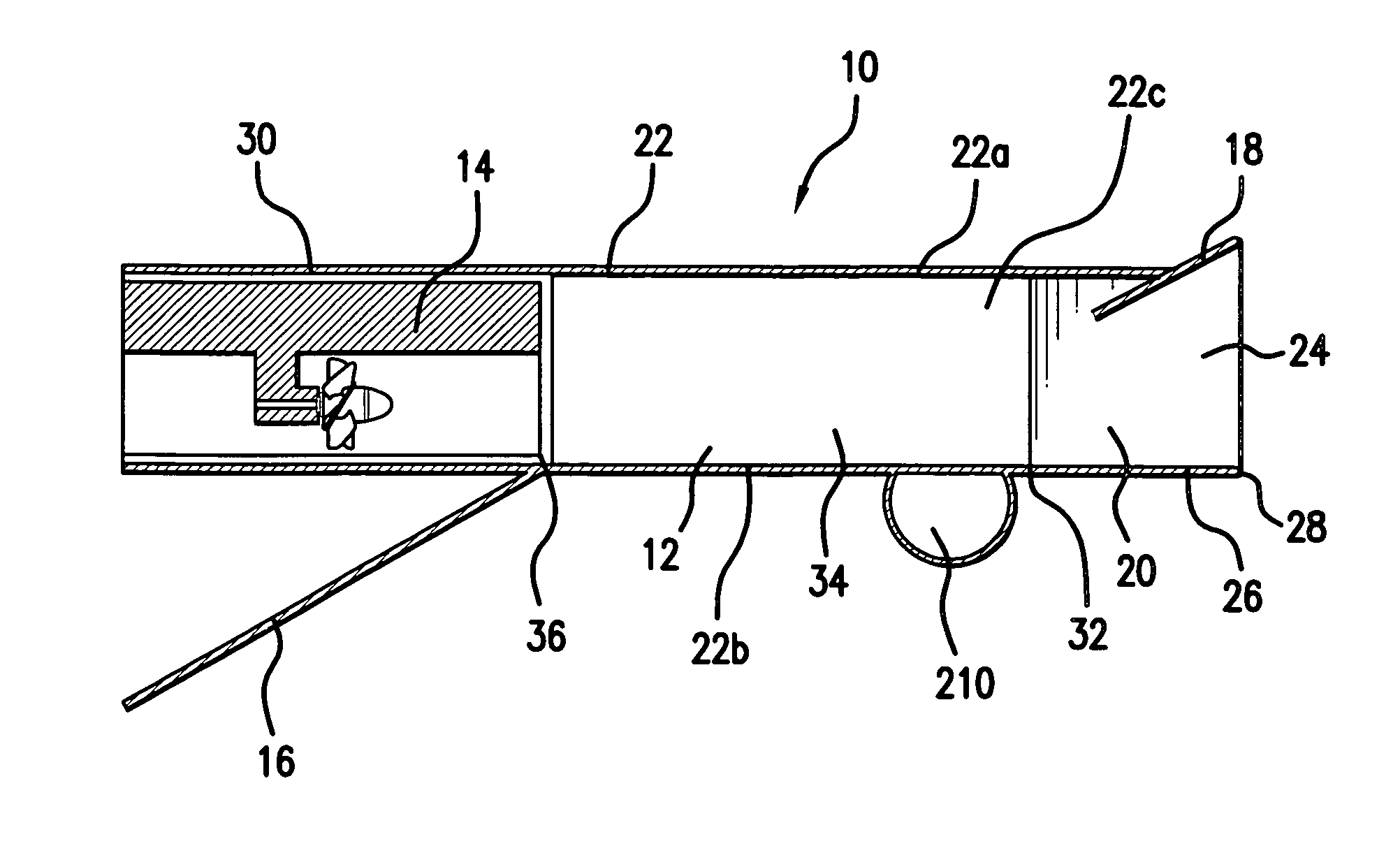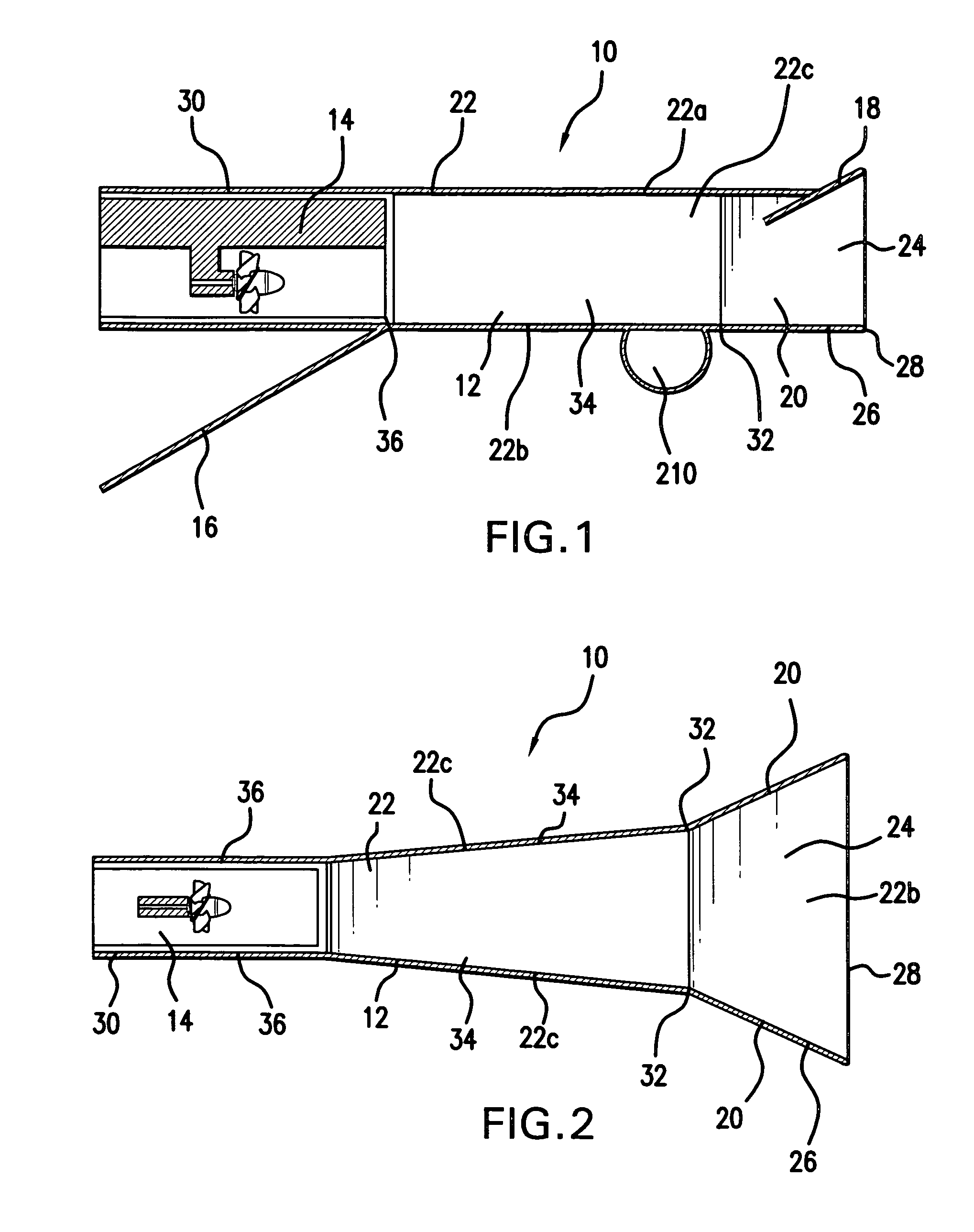Shoaling water energy conversion device
a technology of energy conversion device and water float, which is applied in water-power plants, machines/engines, electric generator control, etc., can solve the problems of reducing affecting the production of energy, and affecting the efficiency of the device, so as to achieve greater efficiency, enhance the production of energy, and increase the effect of electrical energy
- Summary
- Abstract
- Description
- Claims
- Application Information
AI Technical Summary
Benefits of technology
Problems solved by technology
Method used
Image
Examples
Embodiment Construction
)
[0035]Referring to FIGS. 1-6, a shoaling water energy conversion device 10 having features of the present invention is shown. The shoaling water energy conversion device 10 includes a body or collection chamber 12, a hydro-turbine 14, and, preferably, a water foil or clear out channel flange 16. The shoaling water energy conversion device 10 also preferably includes a wave leveler or catch plate 18 and anterior lateral wave confinement blades 20.
[0036]The body 12 preferably includes walls 22 that surround a central channel 24. The walls 22 include a top wall 22a, a bottom wall 22b and two side walls 22c. Alternatively, the body 12 may only three walls, generally in the form of a bottom wall and two side walls. The body 12 has an anterior end 26 and a posterior end 30.
[0037]The body 12 has buoyancy that is sufficient to keep the shoaling water energy conversion device 10 from fully submerging in the water and to allow the shoaling water energy conversion device 10 to rotate relative...
PUM
 Login to View More
Login to View More Abstract
Description
Claims
Application Information
 Login to View More
Login to View More - R&D
- Intellectual Property
- Life Sciences
- Materials
- Tech Scout
- Unparalleled Data Quality
- Higher Quality Content
- 60% Fewer Hallucinations
Browse by: Latest US Patents, China's latest patents, Technical Efficacy Thesaurus, Application Domain, Technology Topic, Popular Technical Reports.
© 2025 PatSnap. All rights reserved.Legal|Privacy policy|Modern Slavery Act Transparency Statement|Sitemap|About US| Contact US: help@patsnap.com



